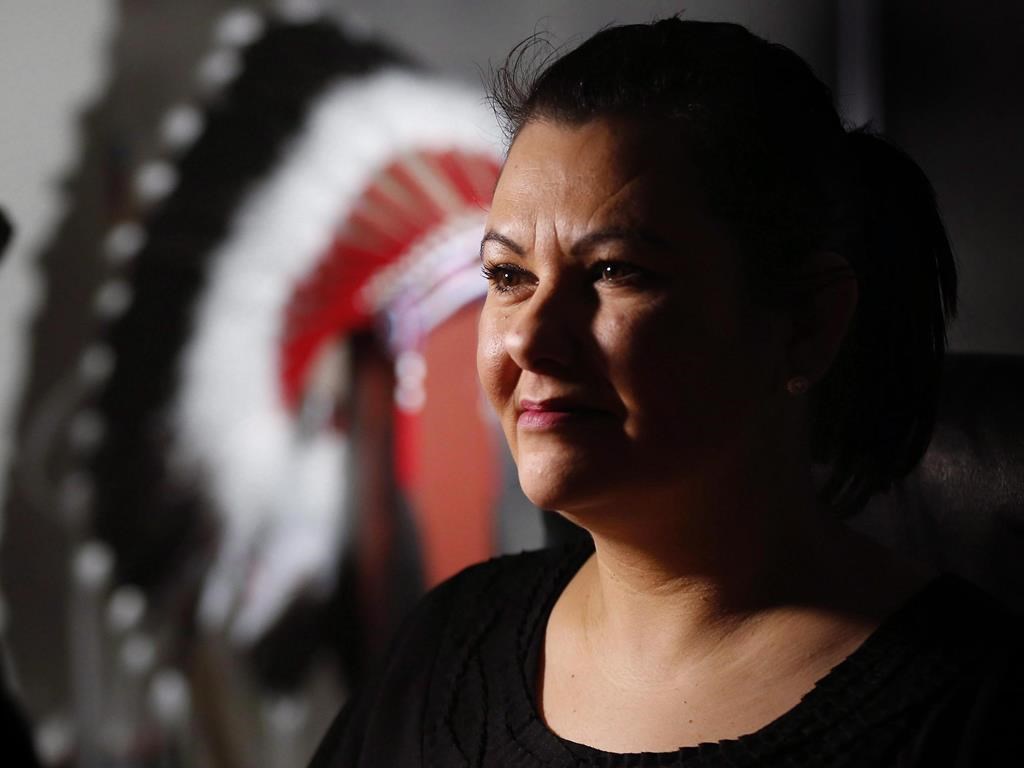A Winnipeg mother says she was scarred for life when her first child was taken away at birth by social workers, who told her she was unfit to parent her newborn daughter because she was just 17 at the time.

“I don’t know how one could fully heal from that trauma,” said the woman, now 41, whom The Canadian Press has agreed not to identify because of her family’s involvement in the child welfare system. “Having a baby taken away from birth? The bond is broken.”
New census data suggests Indigenous children continue to be overrepresented in the child welfare system.
Statistics Canada released data from the 2021 census showing Indigenous children accounted for 53.8 per cent of all children in foster care.
This has gone up slightly from the 2016 census, which found 52.2 per cent of children in care under the age of 14 were Indigenous. At the time, only about eight per cent of kids that age in Canada were Indigenous.
More than three per cent of Indigenous children living in private households in 2021 were in foster care compared with 0.2 per cent of non-Indigenous children. Nationally, Indigenous children accounted for 7.7 per cent of all children 14 years of age and younger.
Statistics Canada says because of difficulties in collecting census data on First Nations and other Indigenous communities, some caution should be exercised in comparing census years.
In recent years there has been a significant push from Indigenous leaders and child welfare advocates across the country to address the myriad systemic issues contributing to the overrepresentation of Indigenous children in care. But experts say factors like colonialism, chronic underfunding of child welfare systems, discriminatory practices and poverty remain.

Get weekly health news
The child welfare system has been part of the Winnipeg mother’s life since before she was born. Some of her siblings were taken from her mother, a residential school survivor, as part of the ’60s Scoop. She was allowed to stay with her mother, but she doesn’t know why.
The pain of having her daughter taken would repeat when her second and third children became permanent wards of the province. She says she used alcohol to cope with a family member’s death at the time. Her children were living with their father when workers apprehended them due to poverty, she says.
Years later, when the woman’s granddaughter went into the system and she became pregnant with her fourth child, she knew she needed to break the cycle. She began working with First Nations advocates and parenting groups to learn more about the culture that was stripped from her.
“I’ve done so much healing. I learned about our grief and loss and about positive coping skills,” said the woman, who is now caring for her granddaughter and four-year-old son.
“Learning my culture and traditions really saved me.”
There are about 10,000 children in care in Manitoba and about 90 per cent are Indigenous.
The Winnipeg mother adds that while there have been some improvements in the child welfare system thanks to First Nations authorities and social workers, prevention is still lacking.
“It should be about keeping families together and empowering the parent. They need something to keep the families together.”
Mary Teegee, executive director of Carrier Sekani Family Services in British Columbia, said generations of children have been ripped from their parents through the residential school system and the ’60s Scoop, and are being raised without the support of their families, culture or communities.
This has contributed to addictions, mental health issues and trauma, she added.
“This isn’t just because Indigenous people can’t take care of their children. It’s because of generation after generation of attacks on family, class and nation structures.”
Cora Morgan, the First Nations family advocate for the Assembly of Manitoba Chiefs, said without proper investments in prevention and healing, government reforms alone won’t get to the root of the issue.
“Right now we’ve been in a situation where government dictates how things are going to happen,” she said.
“There needs to be free will of our nations to be able to bring children home.”
Justin Trudeau’s Liberal government introduced Indigenous child welfare legislation in 2019 and it came into force in 2020.
The legislation is supposed to affirm the rights of First Nations, Inuit and Métis Peoples to exercise jurisdiction over child and family services with the goal of reducing the number of Indigenous children in care.
Indigenous Services Canada says as of July, 37 groups have sent notices of intention to exercise legislative authority and 27 have requested to enter into co-ordination agreements. Out of this, two First Nations have entered into co-ordination agreements with the federal and provincial governments.
Experts say it’s too soon to tell what effect the legislation will have on reducing the number of Indigenous kids in care.












Comments